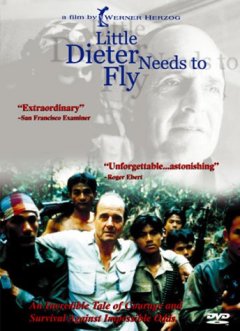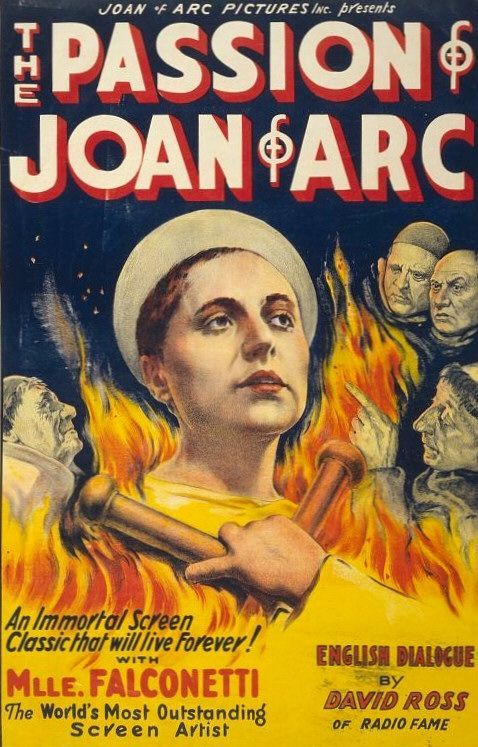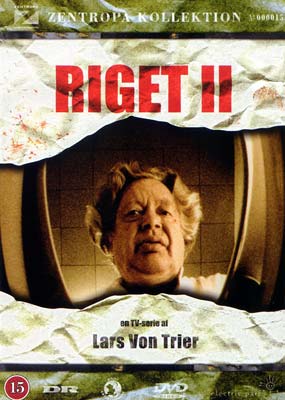

It seems like I only have interests to point out random or even spurious connections between certain films, from different areas or regions. At least that’s what’s visible when one lands on a page discussing the Japanese ghosts and the Jacques Rivette film (see the earlier post here). The thing is, I never know if it’s something more than that, and if it seems so, then why not approach the idea?
Failing once more to harness my attention, it has come into the path of a recurring theme for German filmmakers, and possibly for German artists too. Namely, the memory of two films I have seen before came back into my mind while watching a third. All these three films dealt one way or another, with life in postwar Germany. Actually, there are some more dealing with this subject, but for one reason or another, they do not fit into my pattern, or they pursue other goals.

 Let’s start with Fassbinder’s “The Marriage of Maria Braun”. The first part of this film depicts the state of indigence the Germans after the end of the Second World War were going through. Just rubble everywhere and people can’t make ends meet. Maria’s husband is in prison for years to come, so she has to provide for herself. Well, she ends up selling herself, and while she’s at it she starts climbing the social ladder of the nascent postwar Germany.
Let’s start with Fassbinder’s “The Marriage of Maria Braun”. The first part of this film depicts the state of indigence the Germans after the end of the Second World War were going through. Just rubble everywhere and people can’t make ends meet. Maria’s husband is in prison for years to come, so she has to provide for herself. Well, she ends up selling herself, and while she’s at it she starts climbing the social ladder of the nascent postwar Germany.
Werner Herzog’s Dieter has another fate. He was just a kid during the war, and the fact that during an air raid he saw a plane so close to his house that he actually was able to distinguish clearly the pilot, made him want to become an airplane pilot himself. But this wasn’t exactly possible a few years down the road, being a citizen of a defeated country, where getting enough food for survival was an acute problem (he even remembers the first time when he saw in a shop window the first sausage; no, nobody could afford it). So the best thing to do was to go where the airplanes were. Hence he immigrated to the US. Successfully trained as US Army pilot, he has the misfortune to fall prisoner in Vietnam, after his plane was downed. He then spent several years there, reliving the war famine until at last he was released. Now, living in his California house, he cannot forget what he went through and made sure he will never miss food. Stuffed in his basement, in a secret place, we can see impressive amounts of food staples, like flour, rice, sugar, canned meat etc. If only he could turn back time to leave some of them to himself from the past, during those two episodes he survived.
For some reason, Istvan Szabo’s “Taking Sides/Furtwangler” and Lars von Trier’s “Europa”, although dealing with the same issues, do no resonate with me here. They do elsewhere, on other topics, just not here.
 I recently discovered an Eastern German take on this postwar German landscape, owed to Frank Beyer, the same director who gave us “Jakob the Liar” (but not the version wit Robin Williams!), a sad story about the attempts of a Jew during WWII to lift the spirits of his community. Well, this time, in “Carbide and Sorrel”, we have a romanticized story of that dark age of 1945. The story sounds implausible: a single, nonsmoking worker in a cigarette factory from Dresden is asked by his coworkers to cross half of the Germany to Wittenberge (obviously, both cities belong to what would become the Eastern communist Germany, i.e. DDR) in order to bring some carbide from his brother-in-law’s factory, so that they can weld their equipment needed to start manufacturing cigarettes anew. It may sound implausible, but it turns out it is based on a real story. That endeavor existed, and at the time of shooting this film, the original protagonist. No, he wasn’t chased that bad by both the American and the Soviet troops like the one in the film, nor was he so successful romantically along the road.
I recently discovered an Eastern German take on this postwar German landscape, owed to Frank Beyer, the same director who gave us “Jakob the Liar” (but not the version wit Robin Williams!), a sad story about the attempts of a Jew during WWII to lift the spirits of his community. Well, this time, in “Carbide and Sorrel”, we have a romanticized story of that dark age of 1945. The story sounds implausible: a single, nonsmoking worker in a cigarette factory from Dresden is asked by his coworkers to cross half of the Germany to Wittenberge (obviously, both cities belong to what would become the Eastern communist Germany, i.e. DDR) in order to bring some carbide from his brother-in-law’s factory, so that they can weld their equipment needed to start manufacturing cigarettes anew. It may sound implausible, but it turns out it is based on a real story. That endeavor existed, and at the time of shooting this film, the original protagonist. No, he wasn’t chased that bad by both the American and the Soviet troops like the one in the film, nor was he so successful romantically along the road.
Well, even if he were real or not, it wouldn’t make a big difference. The worker’s exploits are funny, but it’s not that kind of funny. Instead, let’s remember that this film was made in 1963. In this context, we can understand (and practice a little bit the long time practiced habit of “reading between the lines”) that if the man was almost always hungry during his travel, this was a picture of those years of hunger. That the widow factory owner sold her jewelry to buy him food in expectation of a hot night, even the funny consequence of him being a vegan (in my opinion, the only thing that is structurally foreign to the script) and thus disappointing the host and raising her doubts about his virility, none of these are able to erase the fact that during that time Germans did sell their gold in exchange for the scarce food.
 In a comical key, we see serious themes being approached: the endless numbers of wandering refugees on the roads, the mined lands (in the amazing scene of him looking for mushrooms after not heeding a placard warning passers-by about the forest being mined), the loneliness of war survivors, the black market, even the deplorable state of housing and factory buildings in a country where almost everything turned to ruin. But above all, the sometimes confusing power structure and the fear of being randomly caught by the American or the Soviet army forces along the way. Yes, different zones in Germany were controlled by either the Americans or the Soviet troops. But there wasn’t a clear-cut division (even if it were one, it likely only added to the bureaucracy involved), so we totally forgive the unlikely scene where the guy captures the American boat, because we then see that he has to send salutes to both sides of the river, one belonging to the Russians, the other to the Americans, in a re-enactment of the famous final scene in Chaplin’s “The Pilgrim”.
In a comical key, we see serious themes being approached: the endless numbers of wandering refugees on the roads, the mined lands (in the amazing scene of him looking for mushrooms after not heeding a placard warning passers-by about the forest being mined), the loneliness of war survivors, the black market, even the deplorable state of housing and factory buildings in a country where almost everything turned to ruin. But above all, the sometimes confusing power structure and the fear of being randomly caught by the American or the Soviet army forces along the way. Yes, different zones in Germany were controlled by either the Americans or the Soviet troops. But there wasn’t a clear-cut division (even if it were one, it likely only added to the bureaucracy involved), so we totally forgive the unlikely scene where the guy captures the American boat, because we then see that he has to send salutes to both sides of the river, one belonging to the Russians, the other to the Americans, in a re-enactment of the famous final scene in Chaplin’s “The Pilgrim”.
Well, not even the occupation troops are omnipotent. As in the old “Ten Little Indians” story, the seven barrels of carbide are lost, and then regained, but have to be traded for, since the troops need welding too. Carbide is also an asset, troops are interested in it too, or it can be traded for cigarettes, or even for means of transportation. Or… it can be used for fishing! There must be some historical account hidden here, I suspect it was a popular way to get fish back then. Also, even the mushrooms he collected had market value: they provided transportation for his barrels. Adding into the mix the need for love, we can easily see how people vied for essentials: a job providing food, the food itself, love (even of the fast variety was better than nothing), some clothes and maybe honor. That’s about it. The rest was pure survival.
I must also mention the issue of the protagonist’s succession of encounters with the authorities. While he first met the Soviets a couple of times (and then dupes the helpful American once), he is then chased by the Russians and arrested while trying to sell one carbide barrel in order to be able to transport the last one to the Dresden factory. There is something I’m missing here, but it appears that after he escapes and recaptured, it is the local German authorities that set him free once again, apparently because they believe he pulled a nice trick to the Russians (it must be because of the barrel which was filled with instead of carbide to begin with, from the factory). This gives us the idea of conflicting authorities, even competing ones, reminiscent of the Yugoslav man from Emir Kusturica’s “Father is Away on Business” who is deported during Tito years for commenting positively on the Russian Communism. Yes, there were different brands of communism out there, but in our case, here, it most likely was only an expression of “local autonomy” of the German authorities (although I can’t completely rule out a communist local dissent, since obviously the Red Army promoted their local fidels in key positions).
 The two remaining barrels arrived at their destination, but Germany is far from winning the soccer World Cup (it happened in 1954, year also marking the end of this chaotic postwar transition period for Germany; alas, this is only true for West Germany). Our man, having accomplished his mission, knows what comes next: after duty, comes pleasure. So he heads back to his sweetheart. Well, not so fast. A bike would be good, but nothing works as planned, including the unexpected flat tire. Yes, economy is still way down the drain.
The two remaining barrels arrived at their destination, but Germany is far from winning the soccer World Cup (it happened in 1954, year also marking the end of this chaotic postwar transition period for Germany; alas, this is only true for West Germany). Our man, having accomplished his mission, knows what comes next: after duty, comes pleasure. So he heads back to his sweetheart. Well, not so fast. A bike would be good, but nothing works as planned, including the unexpected flat tire. Yes, economy is still way down the drain.
A final word here: this seems to also be the final word of a relative thaw in East German cinematography. While the social comments were kept low, it was still too close to home, and a sequel or another film in the same vein would have been too much for the German Communist Party, closely guided from Moscow. This historical development makes this film perhaps an invaluable document about those days.
But, again, if you know to “read between the lines”. 

























